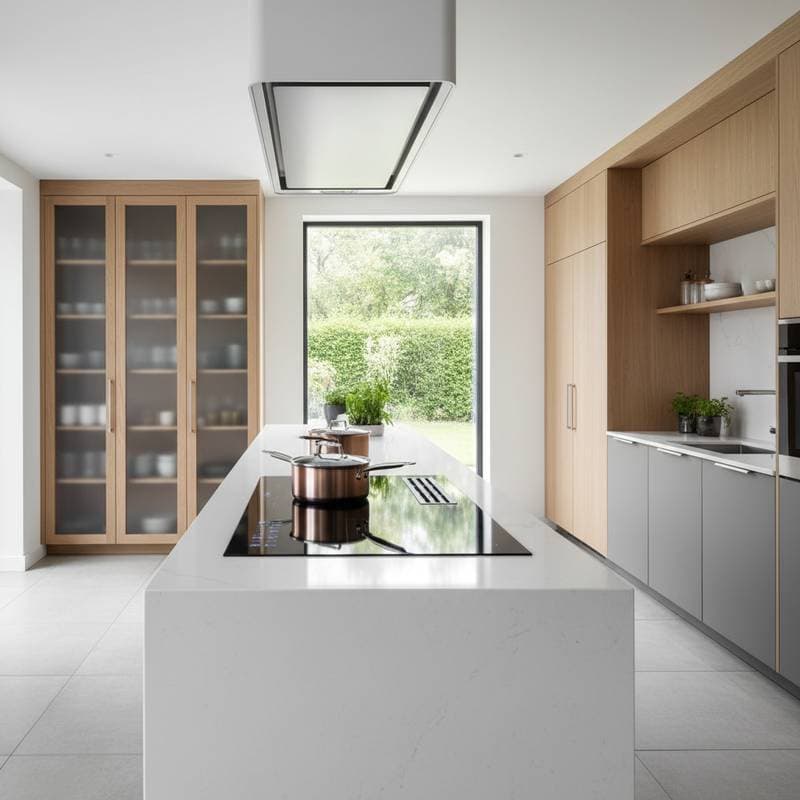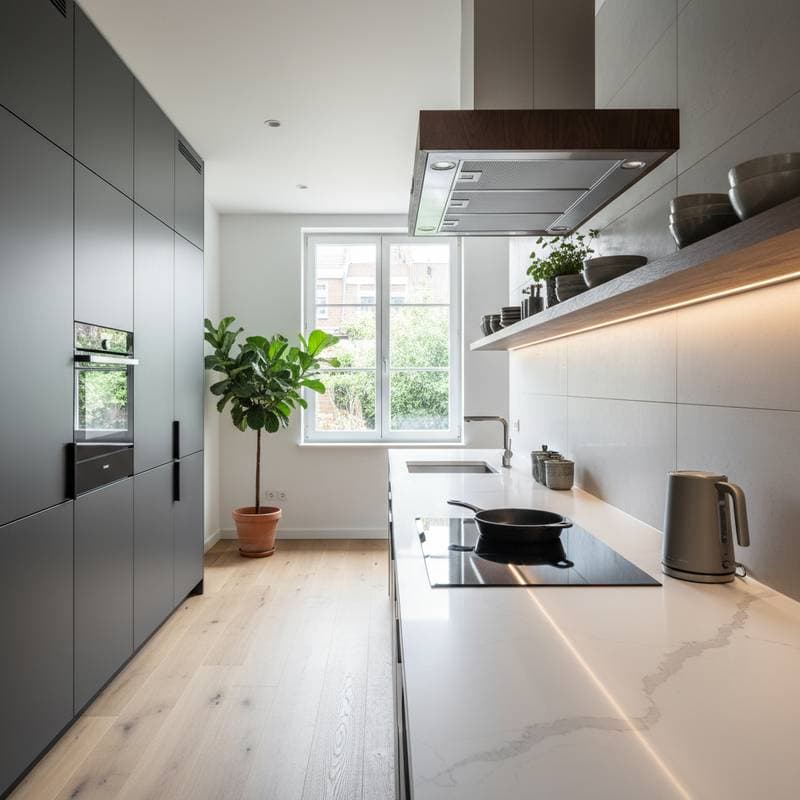Induction Cooktops: Faster Heating and Lower Energy Costs
Induction cooktops represent a significant advancement in kitchen technology, offering rapid heating and substantial energy savings. Home cooks and professionals alike appreciate the precision and efficiency these appliances provide. This guide explores the benefits of transitioning from gas stoves to induction systems, including safety improvements, design integration, and practical selection tips.
Reasons to Transition from Gas Stoves
Gas stoves have served as a traditional choice for many years, yet concerns over safety, health, and the environment prompt a shift toward electric alternatives. Gas appliances emit carbon monoxide and other pollutants that compromise indoor air quality. In certain regions, regulatory discussions about restricting gas stoves further encourage this change.
Induction cooktops address these issues effectively. They employ electromagnetic energy to heat cookware directly, minimizing heat loss and accelerating cooking processes. As a result, users experience reduced energy consumption and lower utility bills.
The Mechanics of Induction Cooking
Induction technology generates heat through magnetic fields that interact with the cookware. This method heats the pan itself while the cooktop surface remains comparatively cool. Such direct heating achieves high temperatures quickly, often in mere seconds.
Compatible cookware requires a ferromagnetic base. Verify suitability by using a magnet; if it adheres strongly to the bottom of the pot or pan, the item works with induction. Many existing sets qualify, though specialized induction-ready options enhance performance.
Budget Considerations for Induction Purchases
Induction cooktops accommodate various financial levels, making the upgrade accessible. Consider the installation type and desired features when selecting a model.
- Entry-Level Options ($100 to $300): Portable single- or double-burner units suit renters or those in small spaces. These plug into standard outlets for immediate use.
- Midrange Models ($500 to $1,500): Built-in cooktops with multiple heating zones and smooth glass tops integrate into typical kitchen counters.
- Premium Selections ($2,000 and Above): Advanced units include sensors, ventilation systems, and touch interfaces for professional applications.
For limited budgets, introduce a portable burner to complement existing appliances. This approach allows experimentation without comprehensive renovations.
Integrating Design and Functionality
Induction cooktops enhance kitchen aesthetics with their sleek, flat glass surfaces. Without grates or protruding controls, they contribute to a clutter-free appearance. Cleaning involves a simple wipe with a damp cloth to restore shine.
The cool surface temperature facilitates seamless installation into materials like quartz or concrete. Designers often pair black induction tops with wood accents and matte elements for a balanced, modern look. This combination maintains warmth in minimalist settings.
Achieving Precision in Cooking
Induction offers exceptional control over heat levels. Adjustments from simmer to boil occur instantaneously, eliminating delays associated with traditional burners. This responsiveness supports consistent results in recipes requiring exact temperatures.
Professional chefs favor induction for its uniformity, which prevents hot spots common in gas or coil systems. Families benefit from enhanced safety, as the surface heats only in contact with metal cookware. This reduces the risk of burns from accidental touches.
Advanced Features in Modern Induction Cooktops
Contemporary models incorporate innovative functions to streamline cooking.
- Bridge Zones: These merge adjacent burners to accommodate large pans or griddles.
- Power Boost Modes: Rapid heating settings accelerate tasks like boiling water.
- Automatic Pan Detection: Heating activates solely upon placing compatible cookware.
- App Integration: Remote monitoring and control via smartphone enhance convenience.
In one kitchen renovation project, a connected induction unit allowed preheating from a mobile device. Such features elevate daily routines to more efficient levels.
Sustainability and Health Advantages
Induction cooking promotes environmental responsibility through superior energy efficiency. Direct heat transfer to cookware cuts waste compared to gas methods, lowering both costs and emissions. The absence of open flames improves air quality, benefiting households with children or respiratory sensitivities.
Kitchens remain cooler during use, easing the load on cooling systems. This efficiency supports comfortable cooking environments, particularly in warmer climates or during extended sessions.
Installation Options: DIY and Professional
Portable models lend themselves to straightforward setup by users with basic skills. Simply connect to an electrical outlet and position on a stable surface.
Built-in installations demand professional expertise due to electrical requirements. Engage a licensed electrician to handle wiring and ensure compliance with safety standards. For custom designs, precise countertop cutouts achieve a flush, professional finish.
Daily Use and Maintenance
Induction cooktops simplify upkeep and integrate into routines seamlessly. Spills clean easily since the surface avoids extreme temperatures. Employ a soft cloth and mild cleaner for routine care.
Cookware maintenance involves checking for flat bases and magnetic properties over time. Users often report quicker meal preparation and reduced post-cooking efforts, fostering a more enjoyable kitchen experience.
Steps to Confidently Adopt Induction
Begin the transition by assessing current needs and space constraints. Test with a portable unit if full replacement seems daunting. Gradually incorporate more zones as familiarity grows.
Induction aligns with lifestyles demanding efficiency and safety. It transforms kitchens into versatile spaces that support diverse cooking demands. Embrace this technology to enjoy sustained benefits in performance and design.









